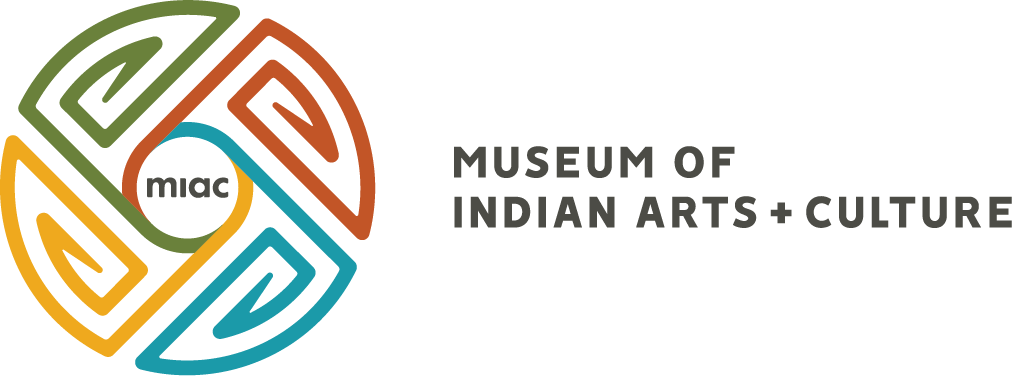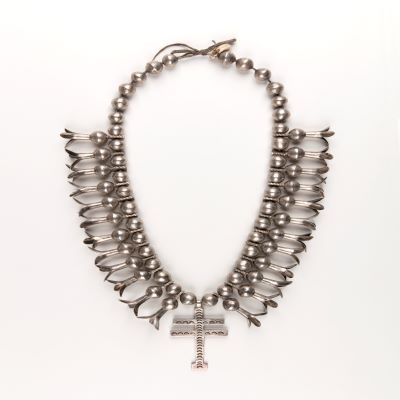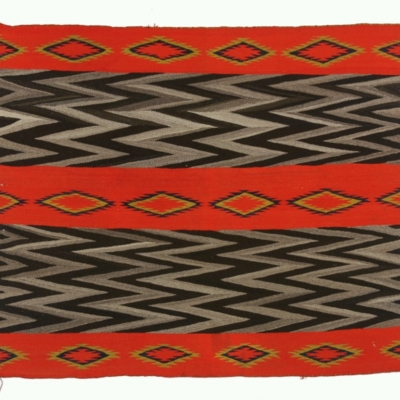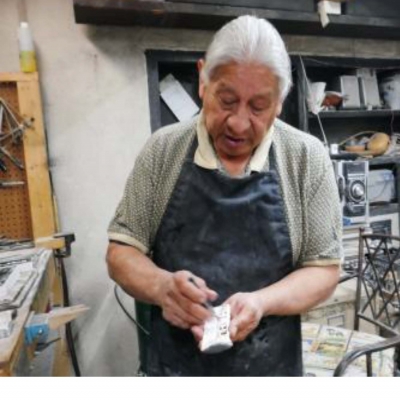Upcoming Exhibitions
Turquoise, Water, Sky: The Stone and Its Meaning
April 13, 2014 through May 30, 2016
Turquoise, Water, Sky: The Stone and Its Meaning highlights the Museum’s extensive collection of Southwestern turquoise jewelry and presents all aspects of the stone, from geology, mining and history, to questions of authenticity and value.
People in the Southwest have used turquoise for jewelry and ceremonial purposes and traded valuable stones both within and outside the region for over a thousand years. Turquoise, Water, Sky presents hundreds of necklaces, bracelets, belts, rings, earrings, silver boxes and other objects illustrating how the stone was used and its deep significance to the people of the region. This comprehensive consideration of the stone runs through May 2, 2016.
View the online version of the exhibition at http://turquoise.indianartsandculture.org
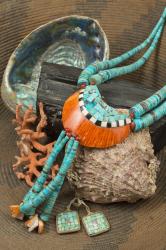
Turquoise’s Companions
Turquoise’s Companions
Many of the materials that accompany turquoise on southwestern jewelry come from oceans, reinforcing the water symbolism of turquoise. Here the raw materials are shown beside jewelry made from them. Raw materials are jet (Cat # 40885/12, 7” by 3.5 inches); abalone (Cat # 36751/12, 5” by 6.5”); spiny oyster or Spondylus sp. shell (Cat# 57795/12, 5” by 5”); and coral (Cat# 57808/12, 4” wide by 3” long). The earrings (Cat#36134/12a,b, 1.1” by 1.3” each) were made by Hopi artist Talaqumptewa and are made of cottonwood, turquoise, abalone, and cotton cordage . The necklace (Cat # 57080/12, 17”long) was made in Santo Domingo Pueblo of turquoise, coral, jet, spiny oyster, mother-of-pearl, silver, and fiber.
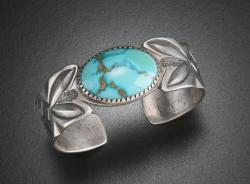
BRACELET
Bracelet, 1920–30, Navajo. Silver, Fox Mine turquoise. Museum of Indian Arts and Culture/Laboratory of Anthropology (10189). Photograph by Blair Clark.
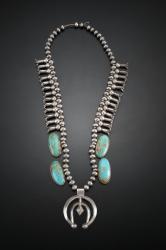
Squash-blossom necklace
Squash-blossom necklace, 1920–39, Navajo, maker unknown. Silver, Turquoise Mountain turquoise. Museum of Indian Arts and Culture/Laboratory of Anthropology (45626/12). Photograph by Blair Clark.
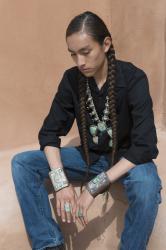
Native, Spanish, and Moorish Influences
The squash blossom necklace is an iconic symbol of the Southwest, but the crescent and flowers began as Moorish symbols that were brought to the region by Spanish explorers and settlers. Navajo jewelers adopted the crescent, which they called a naja , and flowers (now squash blossoms instead of pomegranate flowers) and used them on necklaces. This necklace (Cat # 56966/12, 15” by 10.5”) is Navajo in origin. One ketoh, or bow guard, is Navajo (Cat # 10687/12), while the other was made by Santo Domino Pueblo artist Luther Aguilar in 1952 (Cat # 36139/12). Both are about four inches long and made of silver, turquoise, and leather. The rings are Navajo (Cat # 36078/12, made by Tom Morris, and 10514/12) and made of turquoise and silver.
